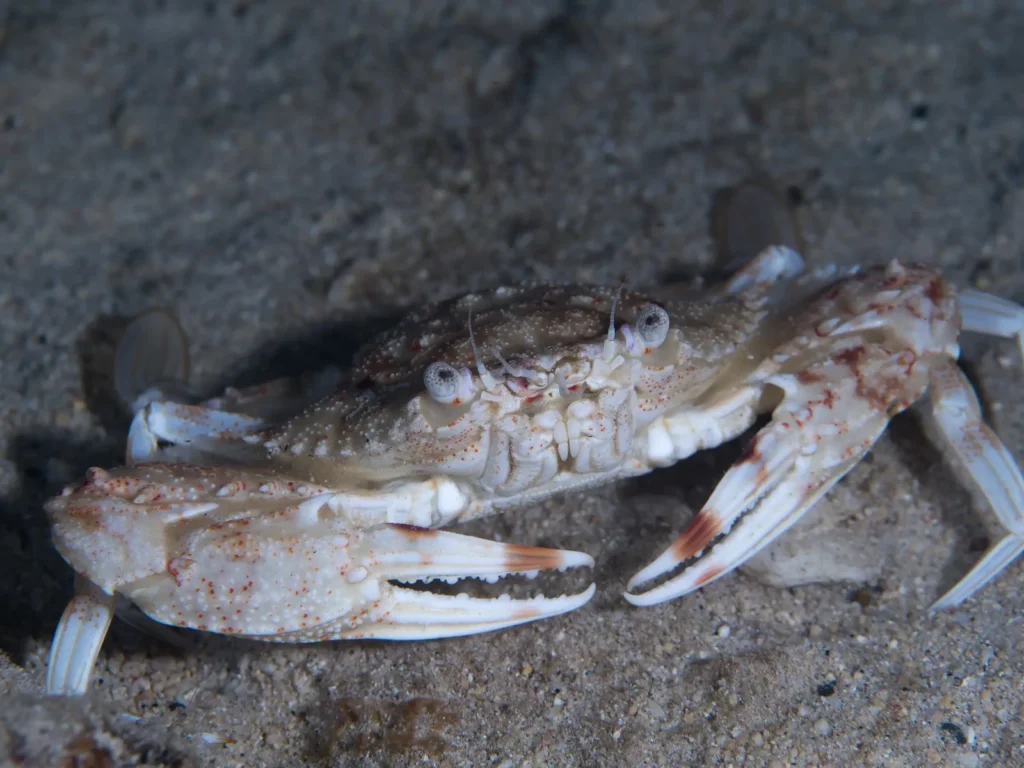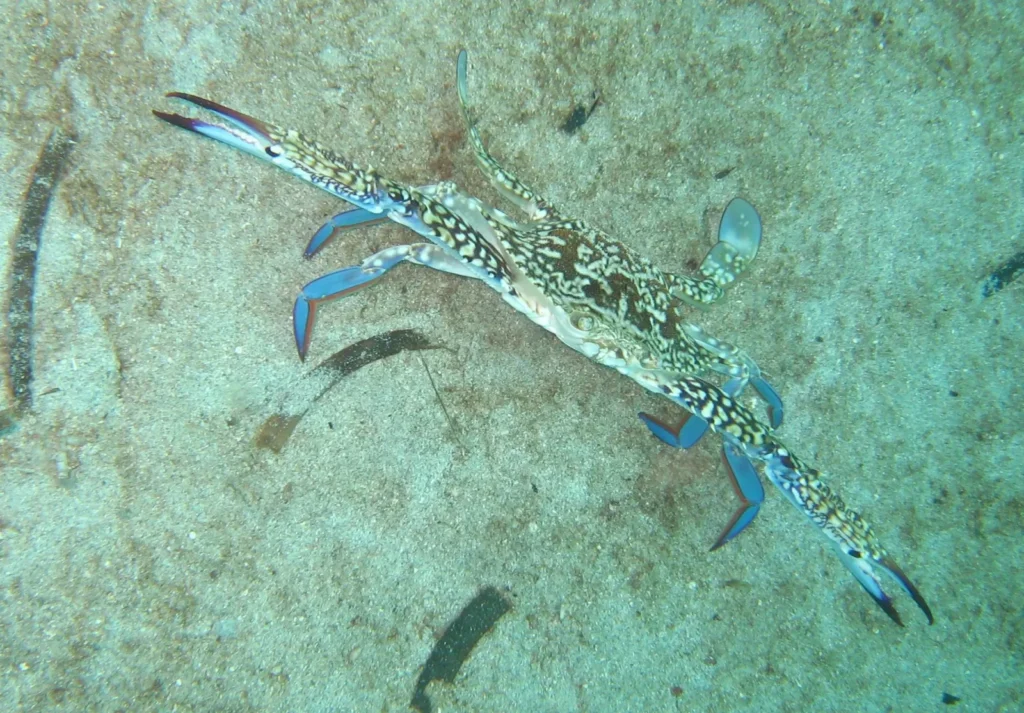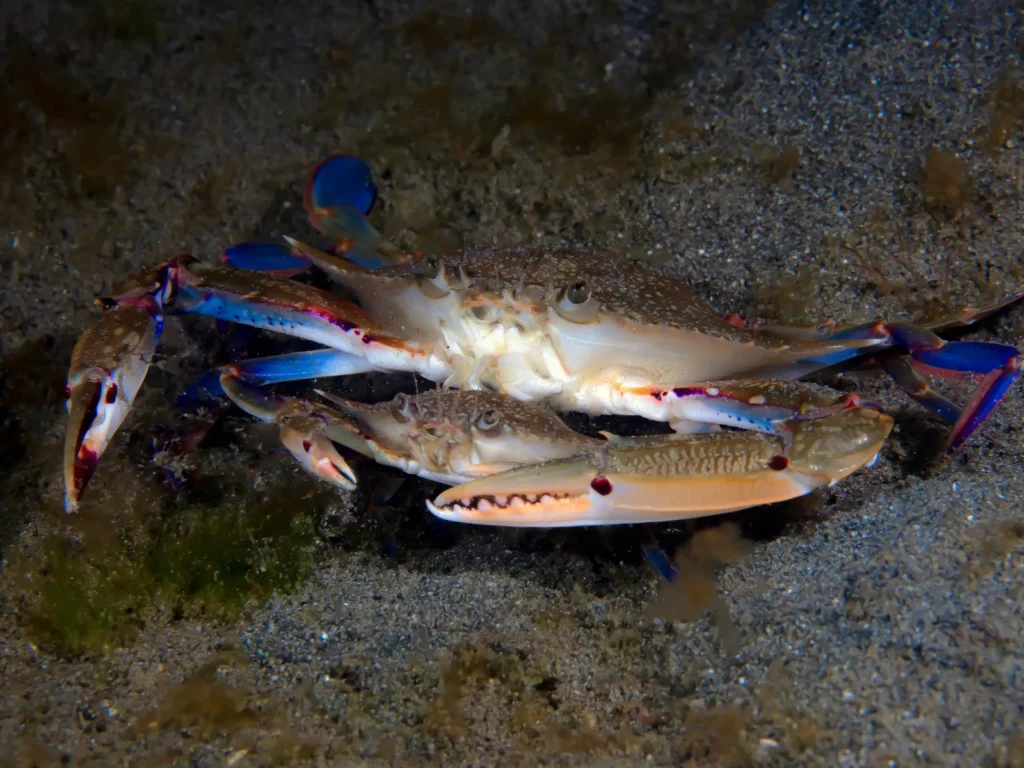Blue fin crab (Portunus pelagicus) is a striking representative of the swimming crab family, impressing with its speed, colorful appearance and commercial importance. This tropical species is distributed in the Indian Pacific region and is known for its blue claws and ability to swim actively.

Classification
• The Kingdom: Animals (Animalia)
• Type: Arthropods (Arthropoda)
• Class: Crustaceans (Crustacea)
• Row: Decapod crustaceans (Decapoda)
• Family: Portunidae (Fin crabs)
• Gender: Portunus
• View: Portunus pelagicus
Appearance
📏 Sizes
- Carapace length - up to 25 cm
- Claw span - up to 80 cm
- Weight - up to 1 kg
🎨 Description
- The shell is oval, colored in blue and purple tones
- In males, the claws are longer and brighter, with a distinct blue color
- The last pair of legs is flattened, spade-shaped, adapted for swimming
Living environment
🌍 Area
- Distributed in tropical and subtropical waters of the Indian Ocean, Southeast Asia, northern Australia
- Also found in the Red Sea and eastern Mediterranean (as an invasive species)
🌊 Habitat.
- Shallow coastal zones: lagoons, river mouths, bays
- Often burrows in sand or silt

Behavior
🦀 Activity
- Very agile, able to swim quickly with the help of the hind limbs
• Leads a predominantly nocturnal lifestyle
- Aggressive in defending the territory
Food
🍽️ Ration
- Omnivore - consumes mollusks, small crustaceans, worms, detritus
- Also hunts fish, especially wounded or dead ones
- Uses pincers to crush shells and hold prey
Reproduction
🧬 Reproduction
- Females lay up to 2 million eggs under the abdomen
- The larvae go through several planktonic stages (zoea, megalopa)
- Sexual maturity is reached after 6-12 months
Economic importance
⚓ Fishing and aquaculture
- One of the most important commercial fishing grounds in Southeast Asia
- It is actively grown in farms in Indonesia, India, Vietnam
- Meat is highly valued for its tenderness and sweet taste
📉 Threats
- Overfishing and habitat degradation can reduce populations
- Restrictions on catching females with caviar have been imposed in a number of regions

Interesting facts
✔️ The name "blue fin crab" (blue swimmer crab) the species was named due to the characteristic shape of the hind fins and blue coloration
✔️ Females have a more rounded shell and less bright coloration
✔️ In Asian countries, it is considered a delicacy - its meat is widely used in soups, salads and fried dishes
Conclusion
The blue fin crab is a bright, fast, and valuable inhabitant of shallow waters. Its attractive appearance is combined with an important role in the ecosystem and economy of coastal regions. Like many marine species, it requires a responsible approach to fishing and conservation.